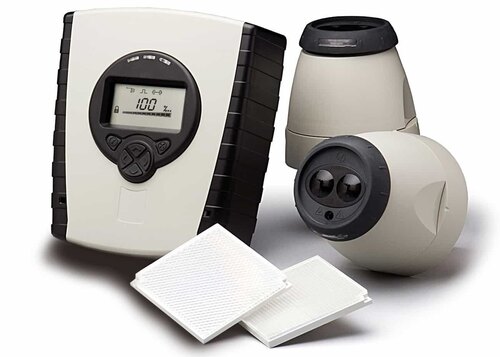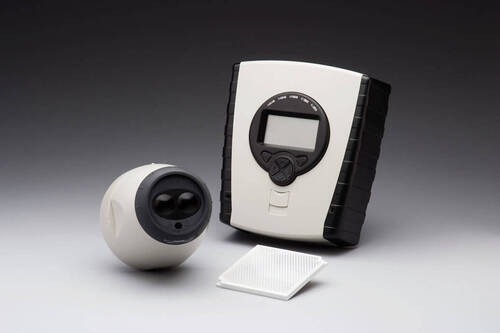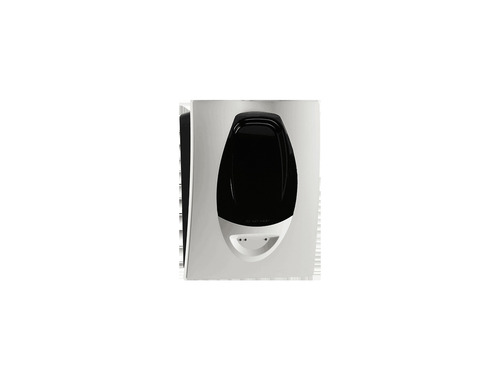- Home Page
- Company Profile
-
Our Products
- Fire Suppression Systems
- Hfc 227ea Based Fire Suppression System
- Clean Agent Cylinderless System
- FK 5112 Suppression System
- Fire Extinguishing System For Electrical Cabinets
- Hfc 227ea Auto Fire Extinguishing System
- Vehicle Fire Protection System
- Aerosol Based Fire Suppression System
- Hfc227ea Total Flooding System
- Mild Steel Novec 1230 Fire Suppression System
- Clean Agent Cylinderless System for Car
- FM200 Fire Suppression System
- Cylinder Less Tube Based Fire Detection Suppression Systems
- Wind Turbine Fire Detection and Suppression System
- High Voltage Transformer Fire Suppression System
- Novec 1230 Clean Agent Suppression Systems
- Carbon Steel Fm 200 Fire Suppression System
- Dual Agent Retardant fire Suppression System
- Aerosol Fire Suppression System
- Novec 1230 Flooding System
- Modular Clean Agent HFC236fa Extinguishers
- Novac 1230 Fire Flooding Systems
- Clean Agent Fire Suppression System
- Car Fire Protection System
- Direct Tube Based Fire Suppression System
- Fire Suppression For Power Generators
- Hfc227ea Clean Agent Fire Extinguishers
- Heat Sensing Tube
- Novec 1230 Fire Suppression System
- Clean Agent Fire Suppression System for Wind Turbine
- Fire Trace System
- Bus Engine Fire Protection System
- SEVO Tubing Suppression System
- Fire Detection And Fire Suppression System
- Heavy Vehicle Fire Suppression Systems
- Fire Sprinkler System Installation Service
- Vehicle Fire Suppression System
- Pre Engineered Fire Suppression System
- Server Rack Fire Suppression System
- Mild Steel Fire Suppression Systems
- Fire Suppression System (Capacitor Panel)
- Electrical Panel Detection Suppression System
- Fire Extinguishing System For Electrical Panel
- Fire Detection Tube Suppression System
- Electrical Panel Gas Suppression System
- Novec 1230 Fire Suppression System for Industrial
- Fm200 Gas Based Fire Suppression Systems
- FM200 Gas Based Fire Suppression Systems For Wind Turbines
- Tube Based Fire Suppression System
- Novec 1230 Fire Gas Suppression System For Electrical Panel
- Novec 1230 Fire Extinguishing System
- Novec 1230 Gas Suppression System For Wind Turbine Fire Suppression System
- Nitrogen Injection Transformer Fire Protection System
- Electrical Panel Fire Suppression System
- Dual Agent Retardant Fire Suppression System
- Diffusible FE36 Fire Suppression System
- Hazardous Cabinets Fire Suppression System
- Chemical Fire Suppression Systems
- Nitrogen NITFP System
- Automatic Fire Detection and Suppression System
- Novec 1230 Fire Suppression Systems
- Fire Suppression For Wind Turbines
- Bladder Tank Proportioning System
- Electrical Panel Fire Suppression
- Fk 5112 Fire Suppression System
- Fire Extinguishing Systems
- Fire Alarms And Detection Systems
- White Addressable Duct Detector
- UV IR Flame Detector
- Fire Alarm System Amc Service
- Conventional Fire Alarm System
- Agni Sounder Hooter
- Addressable Fire Alarm System
- Digital Addressable Fire Alarm System
- Aspirating Systems Smoke Detectors
- Agni Addressable Security Fire Alarm
- Fire Detection And Fire Alarm System
- Uv Ir Flame Detector System
- Ravel 2 zone Conventional Fire Alarm System
- Addressable Photoelectric Duct Detector
- Fire Alarm Sounder
- Fire Response Indicator
- Vesda Aspirating Smoke Detection System
- 4 Zone Addressable Fire Alarm System
- Ravel 4 zone Conventional Fire Alarm System
- Fire Detection Fire Alarm System
- Co2 Flooding/Suppression System
- High Pressure Co2 Automatic Fire Extinguishing System
- Co2 Gas Fire Suppression System
- Gas Based Co2 Flooding System
- CO2 Suppression System
- CO2 Fire Flooding
- ELECTRICAL PANEL CO2 FLOODING SYSTEM
- In Direct CO2 Flooding System
- Co2 Based Fire Suppression Systems
- Automatic Pipeline Co2 Fire Suppression System
- Co2 Fire Flooding System
- Co2 Cylinder Fire Suppression System
- Automatic CO2 Flooding System
- Automatic Co2 Flooding System
- Automatic Pipeline CO2 Fire Suppression System
- Co2 Fire Suppression System
- Passive Fire Protection
- Fire Extinguishers
- Clean Agent Type Fire Extinguisher
- Twin Trolley Type Fire Extinguisher
- Amc For Fire Fighting System
- Co2 Fire Extinguisher Refilling Service
- Co2 type fire Extinguisher
- Carbon Steel Abc Fire Extinguisher
- Automatic Ceiling Mounted D Type Fire Extinguisher
- Mild Steel Wet Chemical Fire Extinguisher
- Water Spray Sprinkler Systems
- Kanex Fire Extinguishers
- Fe36 Clean Agent Fire Extinguisher
- Modular Dry Chemical Powder Extinguishers
- Kitchen Fire Suppression System
- Kitchen Fire Suppression System
- Kitchen Hood Fire Suppression System
- Mild Steel Kitchen Fire Suppression
- Automatic Kitchen Fire Extinguishing System
- Kitchen Fire Extinguisher
- kitchen Nozzle Fire Suppression System
- Restaurant Kitchen Fire Suppression System
- Fire Suppression System For Commercial Kitchen
- Commercial Kitchen Fire Suppression System
- HW & MV Fire Protection System
- Commercial Gas Leak Detector
- Medium Velocity Water Spray System (MVWS)
- Transformer Fire Protection System
- Transformer Fire Prevention System
- Transformer Fire Suppression Systems
- Conveyor belt system fire protection system
- Nitrogen Injection Fire Protection System For Transformer
- High Velocity Water Spray System (HVWS)
- Fire Suppression Accessories
- Fire Hydrant System
- Clean Agent Gas Refilling
- Fire Fighting Foams
- Smoke Detector
- Ravel Beam Smoke Detector
- Addressable Photoelectric Smoke Detector
- Addressable Smoke Detector
- Fire Alarm Addressable Smoke Detector
- Battery Addressable Smoke Detector
- Polycarbonate Smoke Detector
- Agni Smoke Detector
- Conventional Optical Smoke Detectors
- Addressable Duct Smoke Detector
- Agni Wireless Smoke Detector
- White Polycarbonate Smoke Detector
- Manual Call Point
- Fire Retardant Fabric
- Fire Alarm Control Panel
- Heat Detector
- Beam Detectors
- Fire Door
- HW&MV Fire Protection
- Fire Cable Coating
- Fire Cable
- Public Address Systems
- Hydraulic Hose
- Fire Suppression Systems
- Contact Us

Optical Beam Detector
15000 INR/Piece
Product Details:
X
Optical Beam Detector Price And Quantity
- 40 Piece
- 15000 INR/Piece
- 14500.00 - 15000.00 INR/Piece
Optical Beam Detector Trade Information
- Cheque
- Asia
- All India
Product Description
An optical beam detector is a type of sensor or device used to detect the presence or interruption of an optical beam or light path between a transmitter and a receiver. It is commonly used in various applications for security, industrial automation, and even in everyday devices like automatic doors and elevators. The basic principle behind an optical beam detector is to send a light beam from a transmitter to a receiver, and when an object obstructs the beam, the receiver detects a change in the light intensity, triggering a response or alarm.
Here are some key points about optical beam detectors:
1. Components:
a. Transmitter: Emits a focused or collimated beam of light, typically using a laser diode or LED.
b. Receiver: Detects the light beam and measures its intensity.
c. Optical path: The space through which the light beam travels.
2. Types:
a. Active: In an active optical beam detector, both the transmitter and receiver are separate components. The receiver continuously monitors the light beam, and if the beam is interrupted by an object, an alarm or signal is activated.
b. Passive: Passive beam detectors are typically used for perimeter protection. They rely on external light sources (e.g., sunlight or ambient lighting) and use retro-reflective or reflective technology to detect interruptions in the reflected light.
3. Applications:
a. Security: Optical beam detectors are used in security systems to create a perimeter around a property. When the beam is broken, it can trigger alarms or activate surveillance cameras.
b. Industrial Automation: They are used in manufacturing and conveyor systems to detect the presence of objects or for positioning applications.
c. Elevators and Automatic Doors: Optical beam detectors are often used in elevators and automatic doors to ensure safe operation by detecting obstructions.
d. Parking Lot Management: They can be used in parking lots to monitor the entry and exit of vehicles.
4. Range and Sensitivity:
Optical beam detectors come in various models with different detection ranges and sensitivity levels. Some can cover short distances, while others are designed for longer-range applications.
5. Weather and Environmental Considerations:
Outdoor optical beam detectors must be designed to withstand various weather conditions and environmental factors such as rain, snow, dust, and temperature fluctuations.
6. Alignment:
Proper alignment of the transmitter and receiver is critical for reliable operation. If the beam is misaligned, false alarms or missed detections can occur.
7. False Alarm Reduction:
Advanced optical beam detectors often incorporate technologies like multiple beam paths or digital signal processing to reduce false alarms caused by small objects, birds, or environmental factors.
FAQ:
Q. What is an optical beam detector?
Ans: An optical beam detector is a sensor device that uses a light beam to detect the presence or interruption of objects. It typically consists of a transmitter that emits a light beam and a receiver that detects changes in the intensity of that beam.
Q. How does an optical beam detector work?
Ans: The transmitter emits a light beam, which is directed toward the receiver. The receiver continuously monitors the received light intensity. When an object interrupts the light beam and reduces the received intensity, it triggers an alarm or a specific response.
Q. What are the common applications of optical beam detectors?
Ans: Optical beam detectors are used in various applications, including security systems, industrial automation, elevators, automatic doors, and parking lot management.
Q. What are the types of optical beam detectors?
Ans: There are two main types of optical beam detectors:
a. Active: These have separate transmitter and receiver units. The receiver continuously monitors the light beam emitted by the transmitter.
b. Passive: Passive beam detectors rely on external light sources and use retro-reflective or reflective technology to detect interruptions in the reflected light.
Q. What is the detection range of optical beam detectors?
Ans: The detection range varies depending on the specific model and application. Some optical beam detectors are designed for short distances, while others can cover longer ranges, ranging from a few meters to hundreds of meters.
Q. How do you align an optical beam detector?
Ans: Proper alignment of the transmitter and receiver is essential for reliable operation. This alignment ensures that the light beam passes directly from the transmitter to the receiver. Special alignment tools or procedures are often provided by the manufacturer to assist in this process.
Q. What factors can cause false alarms in optical beam detectors?
Ans: False alarms can be caused by factors such as misalignment, dirt or debris on the optics, interference from other light sources, and environmental conditions like rain or snow. Advanced detectors use technologies to minimize false alarms.
Q. Can optical beam detectors work in outdoor environments?
Ans: Yes, optical beam detectors can work outdoors, but they need to be designed to withstand various weather conditions and environmental factors, including rain, snow, dust, and temperature fluctuations.
Q. Are optical beam detectors used in conjunction with other security systems?
Ans: Yes, optical beam detectors are often integrated into larger security systems. They can trigger alarms, activate surveillance cameras, or initiate other security measures when an intrusion is detected.
Q. What are the advantages of using optical beam detectors?
Ans: Advantages of optical beam detectors include their ability to cover long distances, immunity to electromagnetic interference, and suitability for applications where physical barriers or other sensors may not be practical.
Q. Are there any limitations to optical beam detectors?
Ans: Optical beam detectors may have limitations in adverse weather conditions, and they require proper alignment for reliable operation. Additionally, they may not work well in very dusty or foggy environments.
Q. Do optical beam detectors require regular maintenance?
Ans: Yes, optical beam detectors should undergo regular maintenance to ensure they remain clean, aligned, and free from obstructions that could lead to false alarms or reduced performance.
Tell us about your requirement

Price:
Quantity
Select Unit
- 50
- 100
- 200
- 250
- 500
- 1000+
Additional detail
Mobile number
Email
Other Products in 'Beam Detectors' category
" We mainly want inquiries from Gujarat, Rajasthan, Madhya Pradesh, Maharashtra, Goa. "




 Call Me Free
Call Me Free
 English
English Spanish
Spanish French
French German
German Italian
Italian Chinese (Simplified)
Chinese (Simplified) Japanese
Japanese Korean
Korean Arabic
Arabic Portuguese
Portuguese